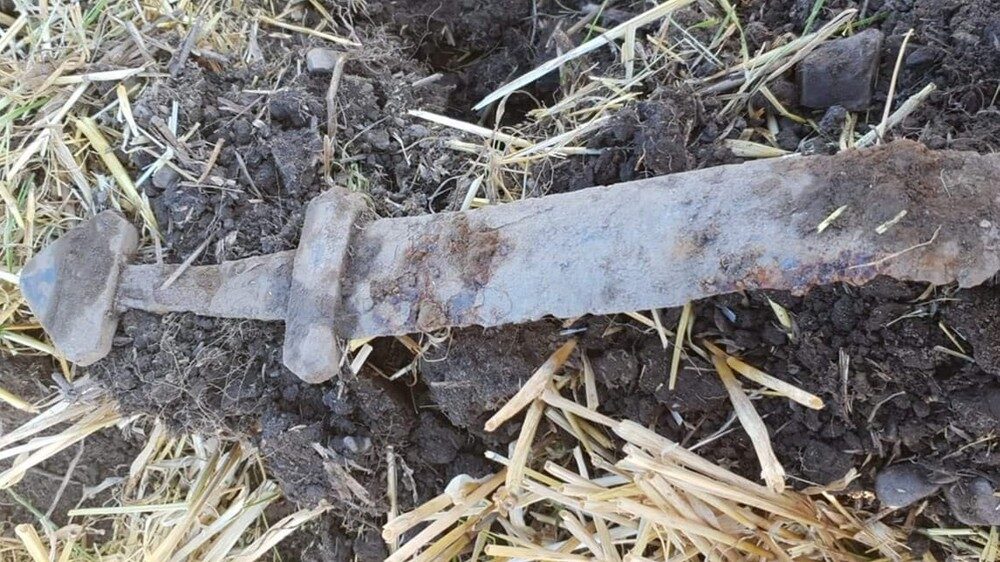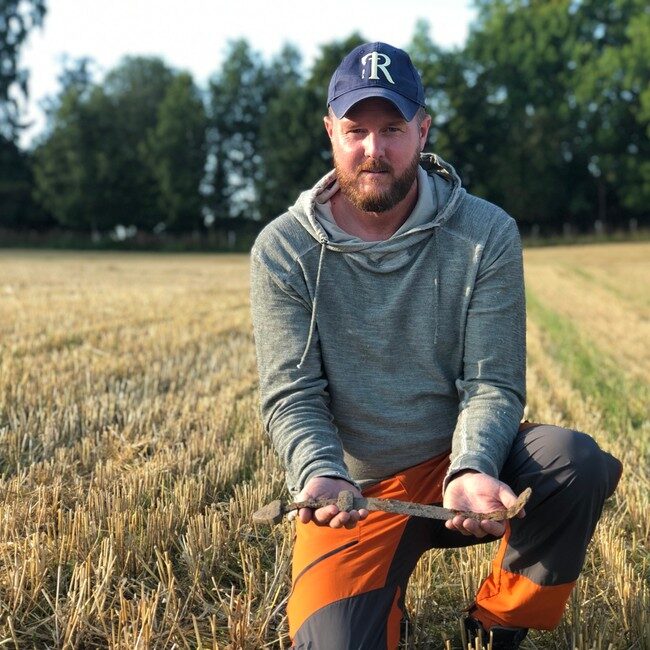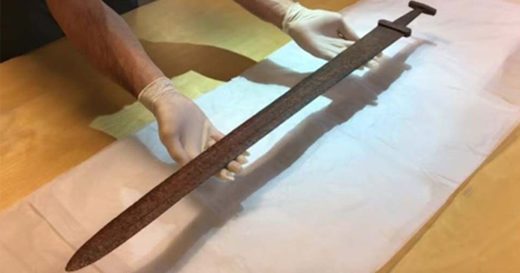
A Norwegian metal detector enthusiast has found a 1,200-year-old sword while roaming the fields in Innlandet County, national broadcaster NRK reported.
When the device first went off over an iron object some 10 centimetres below the surface, Vegard Høystad-Lunna was, by his own admission, uninpressed as he thought it was scrap metal. However, when a closer look indicated that the object he described as "bent and rusty" was of oblong shape, he decided to take dig deeper.
"First, the hilt and the guard appeared. Then I saw it was a sword", Høystad-Lunna, who took up metal detecting as a hobby in 2015 and has since found several objects including a gold charm from Roman period, said.
He describes his reaction as a mixture of surprise and joy. He rushed to call local archaeologist Lars Holger Pilø. Pilø recalled having "one happy detectorist on the phone", describing it as a special discovery and praising Høystad-Lunna for putting a lot of work into his hobby and his concern for doing everything right.

According to Pilø, the sword seems to date from the early Viking age, is about 1,200-years-old and belongs to an uncommon type. Viking swords have been found in Innlandet County before, but most of the finds were made in the 19th century, he explained. This is all the more dramatic given that the sword was found in cultivated land, where whole artifacts are rare as they tend to be damaged or destroyed by ploughs.
"There are even preserved remnants of leather or textile that are wrapped around the grip", Pilø noted.
Pilø stressed that archaeological finds were made on the same farm before, although not of the same calibre or level of preservation.
Summing up, he once again stressed the importance of amateur archaeology with the help of metal detectors, as long as it is done the right way.
"The antiquities that lie in farmland slowly break down and are lost due to cultivation", Pilø said, praising Høystad-Lunna for saving the sword for posterity.




Comment: